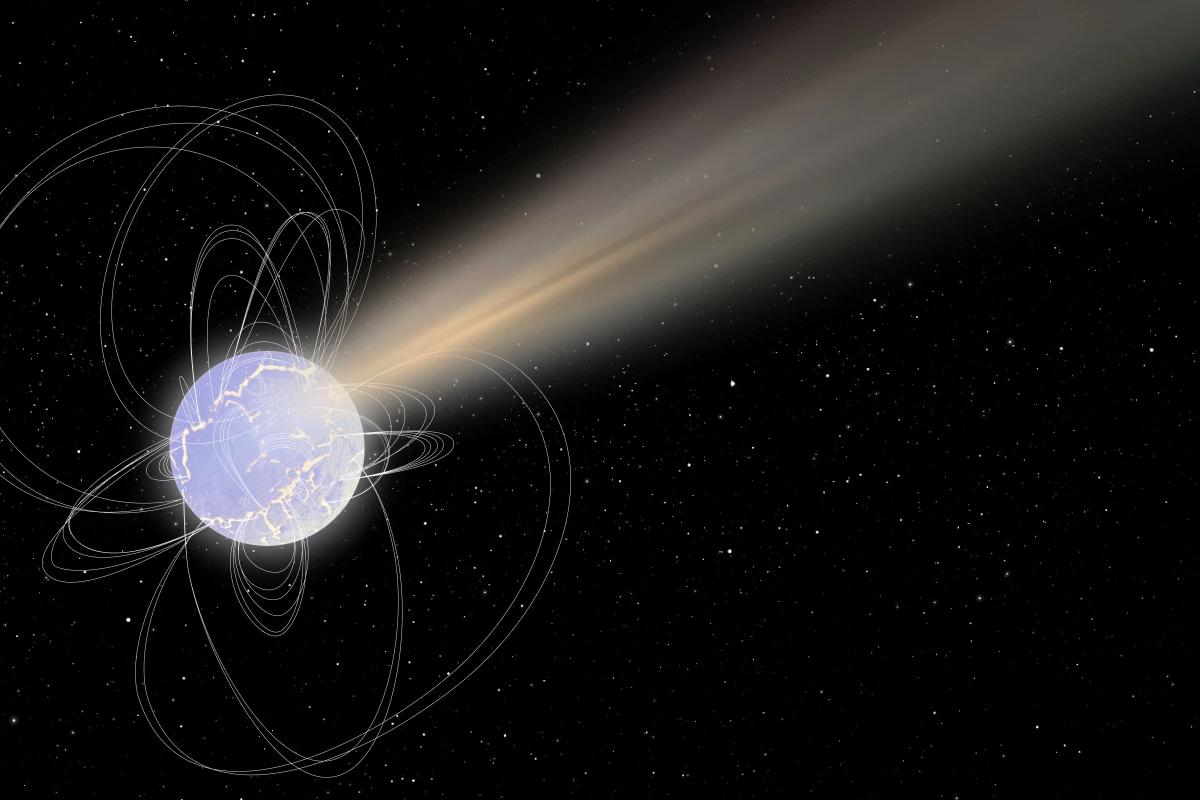We may be a step closer to understanding the mystery of fast radio bursts (FRBs), as astronomers have now detected the first such signal from within our own galaxy. The radio burst in this case was traced to a highly magnetic dead star called a magnetar, which could be key to unlocking the origin of these strange space signals.
Fast radio bursts are exactly what they sound like: intense pulses of radio waves that come and go extremely quickly, lasting mere milliseconds. Dozens of these signals have been detected over the past 13 years or so, pouring in from all parts of the sky, but what causes them remains unknown. That’s because we’ve never seen one in our own galaxy, nor one accompanied by other types of electromagnetic waves.
But now astronomers have detected exactly that. On April 28, a magnetar known as SGR 1935+2154 flared up with a flurry of activity. That’s pretty normal for these highly energetic objects, but alongside its usual X-rays, this magnetar was found to emit a bright burst of radio waves at an intensity that had never been seen from this kind of object before.
The X-ray burst was first detected by ESA’s Integral satellite, while the strange radio signals were picked up by the CHIME radio telescope, and backed up by STARE2.
“This is the first ever observational connection between magnetars and Fast Radio Bursts,” says Sandro Mereghetti, lead author of the study. “It truly is a major discovery, and helps to bring the origin of these mysterious phenomena into focus.”
Magnetars were already high on the suspect list for FRBs, and this new detection strengthens the case for that. These objects are a type of neutron star with an extremely powerful magnetic field, and they’ve been suspected to play a part in several types of short-lived, high-energy cosmic events.
But the mystery is far from solved. It’s not a perfect match, and more data and observations will be needed to determine if magnetars are responsible for any FRBs and, if so, whether that means all of these signals or just some. After all, there are different types of FRB, including one-off bursts and signals that repeat either randomly or regularly.
“Magnetars are a very promising candidate for the FRBs that we've observed coming from other galaxies,” Keith Bannister, Principal Research Engineer at CSIRO, tells New Atlas. “The burst we observed from SGR 1935+2154 is still quite a lot weaker than what we've seen from extragalactic FRBs, but it's certainly pointing in the right direction.”
The research was published in the Astrophysical Journal Letters.
Source: ESA




